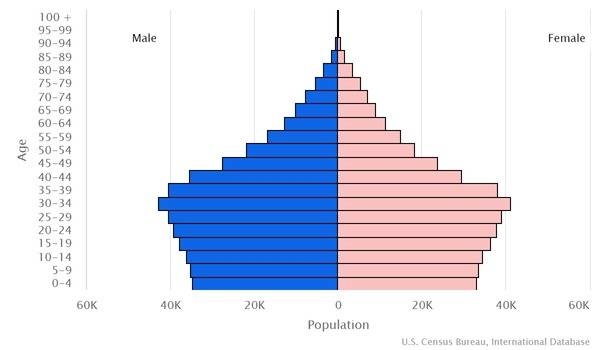Country Summary




Introduction
Background
Following Britain’s victory in the 1865 Duar War, Britain and Bhutan signed the Treaty of Sinchulu, under which Bhutan would receive an annual subsidy in exchange for ceding land to British India. In 1907, Bhutan became a unified kingdom under its first hereditary king. In 1949, the Treaty of Friendship with India established Bhutanese independence.
Geography
Area
total: 38,394 sq km
land: 38,394 sq km
water: 0 sq km
Climate
varies; tropical in southern plains; cool winters and hot summers in central valleys; severe winters and cool summers in Himalayas
Natural resources
timber, hydropower, gypsum, calcium carbonate
People and Society
Population
867,775 (2022 est.)
Ethnic groups
Ngalop (also known as Bhote) 50%, ethnic Nepali 35% (predominantly Lhotshampas), indigenous or migrant tribes 15%
Languages
Sharchopkha 28%, Dzongkha (official) 24%, Lhotshamkha 22%, other 26% (includes foreign languages) (2005 est.)
Religions
Lamaistic Buddhist 75.3%, Indian- and Nepali-influenced Hinduism 22.1%, other 2.6% (2005 est.)
Population growth rate
0.97% (2022 est.)
Government
Government type
constitutional monarchy
Capital
name: Thimphu
Executive branch
chief of state: King Jigme Khesar Namgyel WANGCHUCK (since 14 December 2006); note - King Jigme Singye WANGCHUCK abdicated the throne on 14 December 2006 to his son
head of government: Prime Minister Lotay TSHERING (since 7 November 2018)
Legislative branch
description: bicameral Parliament or Chi Tshog consists of:
non-partisan National Council or Gyelyong Tshogde (25 seats; 20 members directly elected in single-seat constituencies by simple majority vote and 5 members appointed by the king; members serve 5-year terms)
National Assembly or Tshogdu (47 seats; members directly elected in single-seat constituencies in a two-round majoritarian voting system; members serve 5-year terms)
Economy
Economic overview
hydropower investments spurring economic development; Gross National Happiness economy; sharp poverty declines; low inflation; strong monetary and fiscal policies; stable currency; fairly resilient response to COVID-19; key economic and strategic relations with India; climate vulnerabilities
Real GDP (purchasing power parity)
$8.42 billion (2020 est.)
Real GDP per capita
$10,900 (2020 est.)
Agricultural products
milk, rice, maize, potatoes, roots/tubers, oranges, areca nuts, chillies/peppers, spices, ginger
Industries
cement, wood products, processed fruits, alcoholic beverages, calcium carbide, tourism
Exports
$790 million (2020 est.)
Exports - partners
India 94% (2019)
Exports - commodities
iron alloys, dolomite, refined iron, cement, silicon carbides (2019)
Imports
$1.19 billion (2020 est.)
Imports - partners
India 85%, Thailand 5% (2019)
Imports - commodities
refined petroleum, iron products, delivery trucks, cars, wood charcoal (2019)
Exchange rates
ngultrum (BTN) per US dollar -
Page last updated: Wednesday, November 16, 2022
